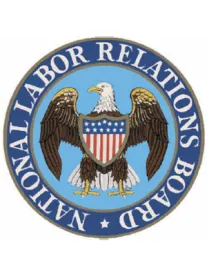In a recent decision, a majority of the National Labor Relations Board (NLRB) overturned an administrative law judge’s (ALJ) finding that an employer’s confidentiality rule and media rule violated the National Labor Relations Act (NLRA). Applying the balancing test articulated in The Boeing Company, 365 NLRB No. 154 (2017), for the first time, the NLRB emphasized that a work rule is lawful if, when reasonably interpreted, it does not interfere with rights protected by the NLRA. The rule must be considered in the context of its everyday application. Moreover, even if the rule in question might interfere with NLRA rights, the NLRB must weigh the impact of the rule on NLRA rights against the employer’s business justification for the rule. The rule is unlawful only if the adverse impact on NLRA rights outweighs the justification for the rule.
In LA Specialty Produce Company, 368 NLRB No. 93 (2019), the NLRB concluded that a rule prohibiting the disclosure of “client/vendor lists” (confidentiality rule) and a rule prohibiting employees “approached for interview and/or comments by the news media” regarding “[c]ompany policies or any event that may affect [the company]” (media rule) were lawful. In reversing the findings of the ALJ, the NLRB explained that under a Boeing analysis, both rules did not prohibit or interfere with NLRA-protected rights. Further, the NLRB emphasized that the General Counsel must prove that the rule actually interferes with NLRA-protected rights.
The NLRB also rejected the ALJ’s conclusion that the confidentiality rule prohibited employees from disclosing the names of the employer’s clients and vendors. Rather, the rule applied only to the disclosure of employer “lists” that contained proprietary information. The everyday, commonsense application of this rule did not interfere with NLRA-protected activity by prohibiting disclosure of the employer’s customers/vendors derived from other sources, but protected only “lists” the employer kept confidential in its business operation. In context, the NLRB concluded that a reasonable employee would understand the difference between disclosing lists containing proprietary information versus sharing only the identities of customers/vendors.
Similarly, the NLRB concluded that the media rule did not preclude employees from speaking out about their “working conditions, labor disputes, or other terms and conditions of employment.” Rather, the rule was limited to when the media approached employees for comment, and it prohibited employees from speaking on the employer’s behalf. The NLRB emphasized the importance of reading the rule in its entirety, noting that a rule prohibiting communication with the media, standing alone, might violate the NLRA. But the rule in question clarified that employees, if approached, could not speak “on behalf of their employer.” In this context, the NLRB concluded that the reasonable interpretation of this rule would not interfere with NLRA-protected rights.
The significance of the NLRB’s decision is the commitment to consider work rules in context, applying more of a commonsense approach to whether a reasonable employee will understand a rule to prohibit protected activity. This clarification, including the emphasis on the General Counsel’s burden to prove that a rule actually interferes with protected rights, as opposed to relying on possible interpretation, is important to employers because it allows for the implementation of work rules without fear of challenge based on some extreme or technical interpretation. In addition, by calling attention to the business justification protection, a reasonable work rule will be deemed unlawful only if the impact on NLRA-protected rights outweighs the business justification for the rule. Although employers may want to continue paying attention to the wording of their work rules to confirm what business interests the rules are intended to protect, employers now have some assurance that work rules will be considered in context, given a commonsense application, and not overturned based on a technical reading or extreme interpretation.




 />i
/>i

